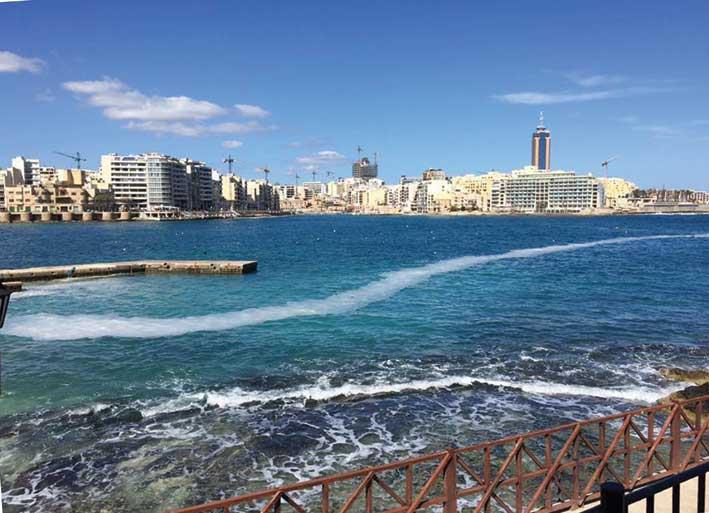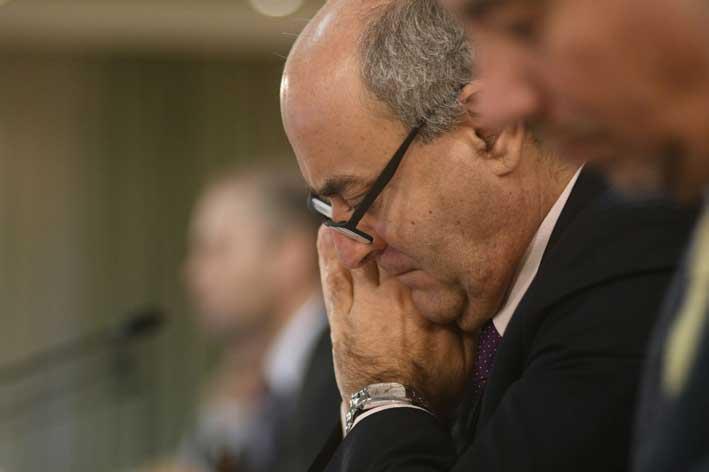The Environment Resources Authority will be investigating the recent reappearance of sea slime within bays around Malta, a spokesperson for the Ministry for the Environment has told The Malta Independent in a reaction to a report which appeared in yesterday’s newspaper.
This comes after environmental organization ‘Stop the Slime’ claimed that large amounts of white foam in the sea beneath the Wignacourt Tower in St Paul’s Bay, and within Exiles Bay, Sliema, was coming from nearby fish farms.
“After years of inaction, this Government took measures to address irregularities related to the fish farm industry” the ministry spokesperson said yesterday.
The ERA will be also collaborating with the University of Malta to investigate such occurrences in a scientific manner.
The spokesperson also informed this newsroom that the transfer of the farms to alternative off-shore sites “is proceeding in accordance with the unilateral agreements submitted by the concerned operators.”

The ministry said that “with regards to the reported slime, one has to keep note of the recent inclement weather conditions that may induce the natural occurrence of foaming due to water agitation by wind and waves.”
The ministry said that currently fish farms are operating with a highly reduced biomass in cages. This means that the pens are using a lower feeding mass and frequency.
The Federation of Maltese Aquaculture Producers, which represents the fish farm operators, also insisted that the slime was a result of rough seas, and not farming activities. In an exchange with this newsroom, AQP said that “this was an effect of the recent storms on the marine ecosystem, which is a common phenomenon that is often observed following storms.”
The Federation also added that at this time of the year the quantity of fish in the farms is minimal. “Feeding activities are drastically reduced correspondingly as a direct result of the reduced quantity of fish coupled with the low sea temperature at this time of the year.”
However, residents of St Paul’s Bay told the newspaper that it was easy to tell the difference between foam caused by waves and foam caused by the fish farms, noting the smell as a distinguishing factor.

Another resident also said that the foam never appeared prior to increased fish farm presence in the area.
‘Stop the Slime’ told this newspaper that while some of the foam may be a result of water agitation, the amount of foam within the area in comparison to others, along with the vicinity of the fish farms would allow people to logically conclude that the foam in the area emerges from there.
It also attributed the increase in foam in the area to the large protein build-up on the seabed the fish farms had caused. It was unfortunate, the group lamented, that the AQP had once again blamed the pollution of stormy weather when last year both a government report and AQP president Salvu Ellul had admitted that the foam had originated from the farms.
In fact, a report commissioned by the Environment Ministry, which was published in August 2016, had found that the infamous sea sludge mostly came from the fish farms.
The sludge had caused widespread anger from the population throughout 2016 after it plagued a number of bays around the Maltese Islands particularly the eastern and southern parts of Malta, culminating in the Planning Authority’s removal of six illegal cages in the St.Paul’s Bay area the following October.

At the time of the report’s publication, Environment Minister Dr Herrera had told the press that operators had been using more cages than permitted while others employed deeper pens than what their permits stipulated.
It had been ascertained that some operators were found to be using a type of feeding method, which used bait with a higher fat content than the norm. The report said that this was leading to the slime often seen around popular bays.
The report also explained that frozen fish was being let to defrost inside the cages, releasing fish oil which turns into foam when it reaches the coast.
On the Environment Ministry’s announcement that ERA will investigate, ‘Stop the Slime’ said that it was a little bit late given that most of the foam would have subsided by today. The group also said that the lack of concrete samples taken from the areas mean it is difficult to say with complete certainty where the foam comes from.
‘No additional pen in St Paul’s Bay’
With regards to the environmental group’s claim that a ninth and illegal cage had appeared in the St Paul’s Bay area, the spokesperson said that one of the operators is finalising what is known as ‘carryover’, whereby the remaining fish from last year’s farming season are counted by inspectors.
This involves the use of a runner cage that films fish being transferred from one cage to another, as per established control standard operating procedures.
This extra runner cage will be removed once this process is completed, which is expected to be completed by the end of next week.
The Federation “categorically denied that an additional pen has been added in St. Pauls Bay”